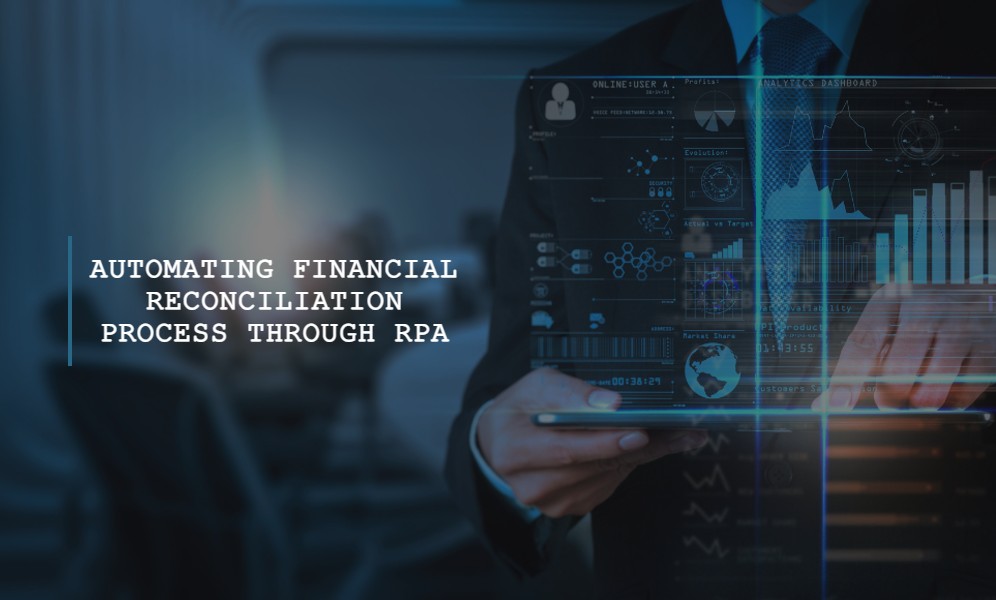Automating Financial Reconciliation Process Through RPA
With the development of artificial intelligence and allied technologies, finance workshops across enterprises are witnessing efficiency and productivity improvements.
Typically, the challenges faced by the finance department can be summarized into the following three types:
1. Manual repetitive tasks: Finance teams have to process large amounts of manual data import, bill checking, etc., which is cumbersome and inefficient.
2. High error rate: There are multiple layers in the entire finance process from bookkeeping to reimbursement, and manual data entry makes standardization difficult which affects accuracy
3. Information exchange between systems: Financial work floors typically interact with data coming in through multiple sources, this data is inconsistent and the sources don’t interact with each other making the entire workflow journey cumbersome
In order to overcome these challenges and push the productivity frontier it is necessary that the financial department automates the repetitive, time-consuming, and labor-intensive tasks to fully realize the value of human resources.
Applications of RPA services can add wings to finance shop in enterprise and greatly improve the efficiency of business management. Application scenarios of financial robots
1. Bank-enterprise reconciliation: Bank-enterprise reconciliation is a regular task of the internal control A large number of manual tasks often cause problems such as untimely reconciliation and difficulty in retrieving the reconciliation statement, which not only consumes a lot of manpower and material resources but sometimes also has accuracy errors. In the scenario of bank-enterprise reconciliation, the RPA robot can log in to the online banking system to obtain bank statement information, log in to the enterprise’s financial accounting system to obtain accounting data, and automatically perform reconciliation operations for all accounts. It can also automatically export the statement, merge and summarize it and upload it to the back-end system according to the enterprise needs.
2. Monthly financial report: For a conglomerate, consolidation of financial statements from various subsidiaries and branches is time consuming. From the initial data collection, summary account balances, , to the final financial report generation, everything is done manually by finance team,. RPA robots can automatically send collection reminders to subsidiaries, monitor mailboxes in real-time, summarize the received data, follow-up processing, and calculations, and automatically generate financial reports according to set rules. This significantly shortens the production cycle of financial reports
3. Contract audit: The internal audit team needs to regularly search and collect the latest documents issued by various regulatory agencies to review whether the signing of the corresponding clauses of the contract complies with the relevant regulations. This brings in an inherent risk of human error and misjudgment. RPA robots can automatically log on to official platforms to collect the latest documents issued by various regulatory agencies. Using leading AI technology, RPA robots can extract contract text information and external collection information, and make model judgments on the structured information obtained.. It saves time-consuming manual retrieval, collection, and sorting, and avoids untimely updates and missed inspections. Along with improvement in efficiency, it also frees finance personnel for high-value work.
Aforesaid sub processes are just the tip of the Iceberg. RPA potential is immense across F&A functions as well as other auxiliary processes in an Enterprise. We at Nuaig help you weave this AI fabric in your organization to augment business goals




